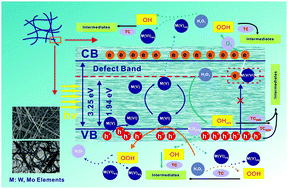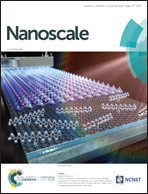Morphology-tunable WMoO nanowire catalysts for the extremely efficient elimination of tetracycline: kinetics, mechanisms and intermediates†
Abstract
The presence of antibiotics in aquatic environments has attracted global concern. The Fenton system is one of the most popular methods for eliminating antibiotics in aquatic environments, but the existing Fenton system is limited due to the potential for secondary pollution, and the narrow pH range (∼3–5). In this study, we report that the bottlenecks for high-strength tetracycline (TC) wastewater treatment under neutral conditions can be tackled well by a class of mixed-valence W/Mo containing oxides (WMoO-x) with tunable morphologies. Triethanolamine was selected as a structure-directing agent to control the morphologies of the catalysts going from ultrathin nanowires (UTNWs) to wire-tangled nanoballs (WTNBs). As a proof of concept, the most efficient catalyst in the batch samples, WMoO-1 ultrathin nanowires, was employed as a model material for TC degradation, in which the coordinatively unsaturated metal atoms with oxygen defects serve as the sites for TC chemisorption and electron transfer. As a result, 91.75% of TC was degraded in 60 min for the initial TC concentration of 400 μM. Furthermore, LC-MS analysis confirmed that the TC could be degraded to nontoxic by-products without benzene rings, and finally mineralized to CO2 and H2O. ICP-MS and cycle experiments showed the good stability and reusability of WMoO-1 UTNWs in the Fenton-like system. The findings of this work provide fresh insights into the design of nanoscale catalyst morphology and reaffirm the versatility of doping in tuning catalyst activity, extending the range of the optimal pH values to neutral conditions. This is significant for the expansion of the heterogeneous Fenton-like family and its application in the field of water treatment.



 Please wait while we load your content...
Please wait while we load your content...